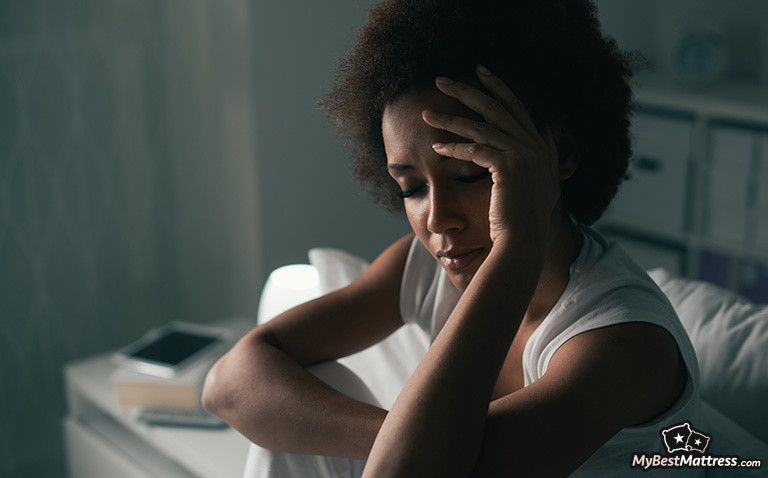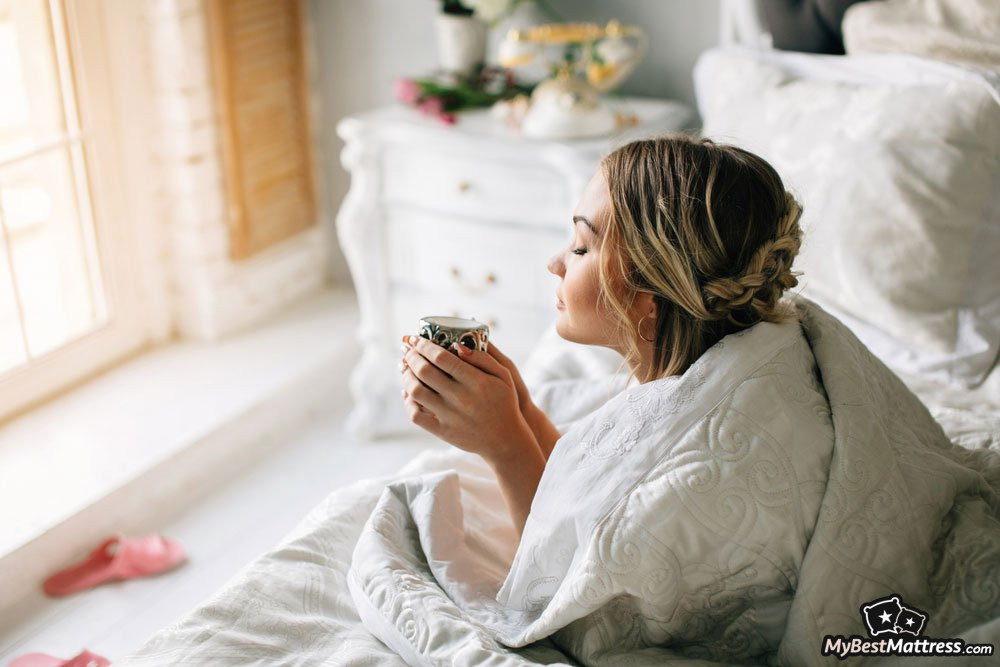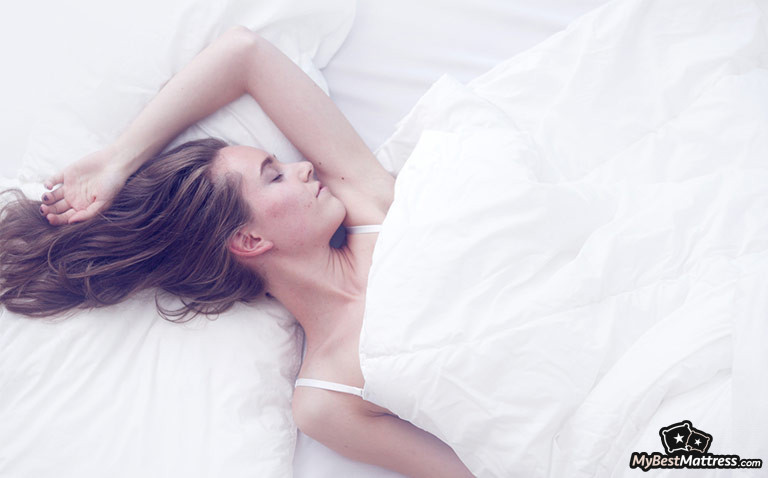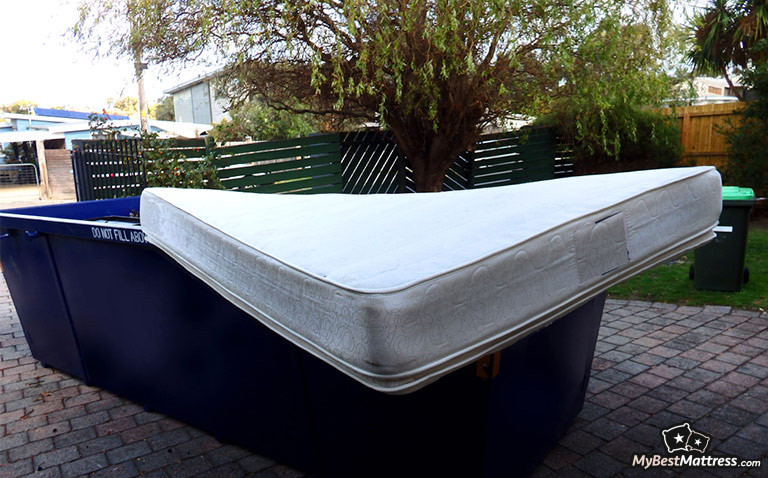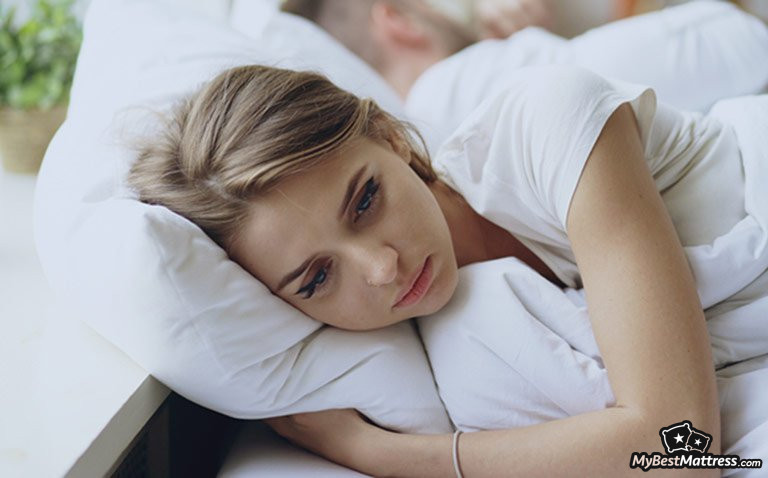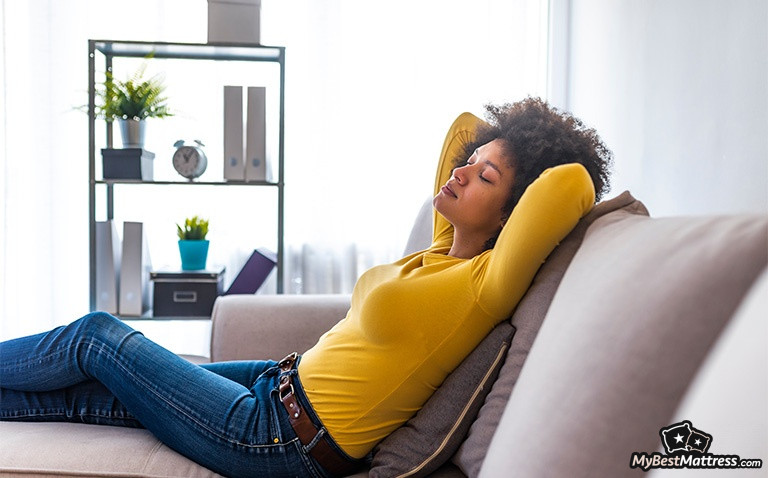
We’re all used to sleeping tucked in our beds. Sinking into that fluffy pillow, surrounded by cloud-like sheets... But have you ever experimented with your sleep habits and tried sleeping sitting up?
Well, maybe you have. Whether it was the office chair by your desk, the recliner in the living room or something further from home like an airplane seat, sleeping sitting up isn’t all that uncommon, though rarely intentional.
Unless you are determined to start a new trend of only sleeping in chairs, in which case, more power to you!
But if you’ve never even considered trying to sleep anywhere other than your bed, sleeping upright might seem like uncomfortable and daunting uncharted territory.
So, is sleeping sitting up worth your attention? And is there anything you should be aware of before trying it out? Everything you need to know about sleeping upright, wrapped up in one article!
Table of Contents
- 1. Should We Be Sleeping Sitting Up?
- 2. Sleeping Upright And Health
- 2.1. Sleep apnea
- 2.2. Snoring
- 2.3. Digestion
- 2.4. Neck and back pain
- 2.5. Post-surgery recovery
- 3. Side Effects of Sleeping Sitting Up
- 3.1. Deep Vein Thrombosis
- 3.2. Back, Neck, And Knee Issues
- 3.3. Circulatory Problems
- 4. How To Sleep Sitting Up And Actually Feel Rested
- 4.1. Transition slowly
- 4.2. Proper support
- 4.3. Create the perfect environment
- 5. The Best Sleeping Positions
- 5.1. On Your Back
- 5.2. On Your Side
- 5.3. On Your Stomach
- 6. Conclusions
Should We Be Sleeping Sitting Up?
Let’s be honest. Even though we all know sleeping sitting up doesn’t even come close to sleeping in a bed or even on a couch, there just are some situations that leave you with no other choices.
Such examples include the aforementioned planes, crashing at the library desk during finals week, and - hopefully not as commonly - spending the night at the hospital next to someone’s bed.
In all of these situations, you have to pick between an unnatural sleeping position and oftentimes no sleep at all, so naturally, the lesser evil usually takes over.
But has there ever been a time when sleeping sitting up was preferred?
Believe it or not, but the answer is yes!
It all starts with one of the oldest medical theories in history - the miasma theory. Up until the latter half of the 19th-century people thought that illnesses such as tuberculosis, cholera, and even the Black Death, were caused by “bad air”.
The theory thought that the air that carried diseases was heavier than the healthy, clean air, thus sinking towards the ground and floor. And when are our heads closest to the floor?
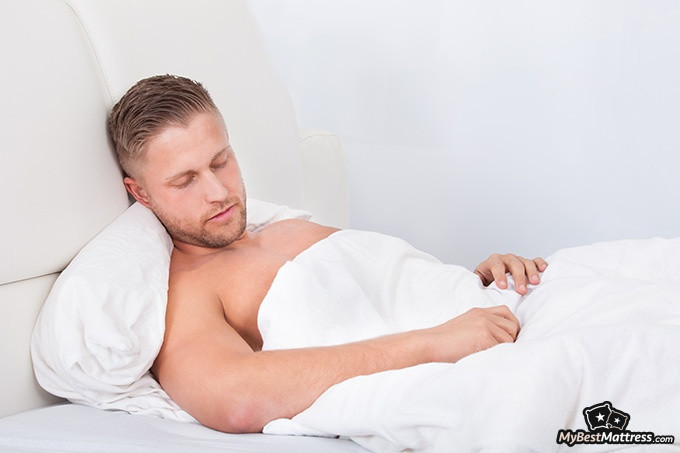
Exactly - when we sleep in bed!
For that reason many surviving beds from before the 17th century are exceptionally short - the widespread custom was to sleep in an upright position to keep one from breathing the polluted air.
Of course, the trend was mostly abandoned when the germ theory was introduced and people stopped fearing accidentally breathing in a sickness.
In this day and age, there is no definitive opinion regarding if we should or shouldn’t be sitting upright while sleeping. More often than not it simply boils down to personal preference.
That being said, we should still remember our old friend - gravity. Truth is, humans are not exactly designed to sleep while sitting upright. Mostly because several times throughout the sleep cycle we lose control over our bodies and become completely paralyzed.
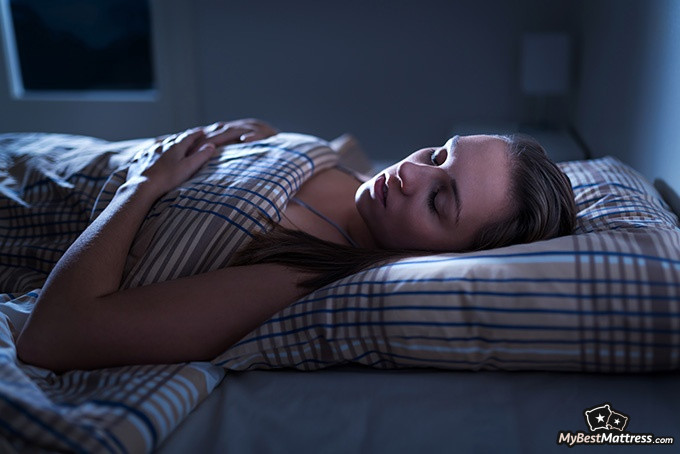
During the first 60 - 90 minutes of us falling asleep our bodies slowly sink into a deep sleep. This is when our bodies still have some muscle tone left, even though we are slowly relaxing more and more. However, once REM sleep sets in, our bodies completely relax, making it a lot more difficult to stay asleep and sitting upright at the same time.
In the end, you will either keep waking up throughout your slumber or simply fall out of your seat.
Ultimately, however, the bottom line is to sleep in such a position that allows your body to completely rest and prepare for the new day. So if you can only get a good night’s sleep while sitting straight up, more power to you!
That being said, you might need to think twice before picking your sleeping position if you have some health concerns.
Sleeping Upright And Health
There’s no denying that sleeping upright simply feels different. And it can make an even bigger difference if you have certain health conditions.
Even though sleeping sitting up isn’t the most natural for us, doctors might recommend the unusual position to alleviate discomfort or even prevent sudden complications.
Sleep apnea
With nearly 20% of the world’s population[1] affected by it, sleep apnea is one of the most serious sleep disorders that can result in premature death. Its most defining symptom is the obstruction of airways during sleep, making the person stop breathing several times throughout the night.
While some people tend to choose CPAP machines to help fight off sleep apnea or end up going for the long-term solution and losing weight or quitting smoking, sleeping sitting up is still often recommended as an additional precaution that can help open up the airways and avoid suffocation.
This precaution works best if you have proper neck and head support while you sleep sitting up, as an insufficiently supported head can fall to one or the other side, causing the exact thing you are trying to avoid - blocked airways.
Latest Saatva Coupon Found:
UP TO $500 OFF
Limited-time Saatva Sale
We're sharing a limited-time Saatva mattress discount with our readers! Grab this deal & enjoy your new mattress with huge discounts.
Snoring
Even if you don’t have sleep apnea, sleeping upright might be something worth your consideration. In some cases, it might even save your relationship! Let me explain.
Sleeping sitting up utilizes gravity to make sure our organs stay relatively where they’re supposed to be. As already mentioned, sleeping upright helps keep air properly passing through the airways and avoid potential blockages.
This is great news for those who snore or anyone who can’t sleep because of someone’s nighttime growls. And you don’t even need to move to a different room just to sleep on a chair. A few extra pillows in bed and you can finally have a snore-free night!
That being said, even though sleeping upright can be a quick fix to the snoring problem, it might still be a good idea to not sweep it under the rug (or duvet) and schedule a checkup with your GP. You never know, snoring might be an early sign of something more serious.

Did you know?
Have you ever wondered which mattresses are approved as the best for sleep?
See & compare TOP mattresses side by sideDigestion
If you’ve ever gone to bed after a big meal you definitely know the discomfort of laying down with a full stomach. Aside from the impossible-to-ignore pressure on your diaphragm, an unsuitable sleeping position can lead to acid reflux and even GERD in extreme cases.
If you have trouble with reflux, sleeping sitting up might be your ticket to a calmer night, as undigested food will remain in your stomach while you slumber. Of course, thanks to the one and only gravity.
And with the odd chance that your reflux would still act up, even while sleeping upright, the discomfort would be significantly lower compared to how bad it can be when laying down.
Neck and back pain
Of course, decreased neck and back pain is perhaps the first benefit of sleeping sitting up to come to mind.
It’s undeniable that sleeping sitting up requires a lot of support in order to rest comfortably. And what a wonderful coincidence - neck and back pain also often demands additional support for your spine!
This sleeping position also works great for expecting mothers, as additional and special pillows can aid not only with lower back pain but help get up easier as well, as a growing baby bump can make simple movements much more difficult.
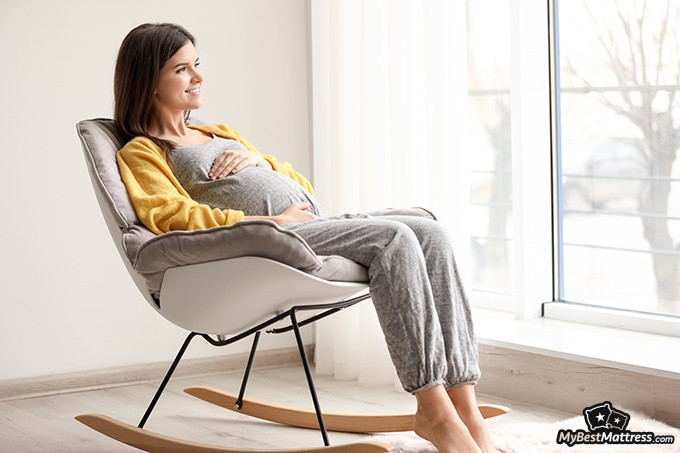
Now, it’s important to keep in mind that sleeping sitting up does not help in all cases of spine pain, as it can be caused by various reasons and require different sleeping positions. Try a few different variations to find what suits your needs best. And remember - your health and quality of sleep come first!
Post-surgery recovery
While sometimes trying to sleep in an upright position is a choice people make on their own, whether it would be out of curiosity or trying to find a more comfortable resting position, in some cases sleeping sitting up is inevitable.
If you’ve ever had surgery you were most likely instructed to sleep propped up by several pillows. This is especially common practice after most abdominal and upper body surgeries, particularly breast augmentation. This is because of the lymphatic system and the direction that fluids are moved in the body.
In order to avoid excessive swelling and healing complications, gravity helps move the lymph downwards from the top of the body. In addition to bettering the healing process, sleeping sitting up after a surgery has several other benefits.
For one, an upright sleeping position prevents you from tossing and turning too much, which could potentially rupture the sutures before they are ready to be taken out. Additionally, sleeping propped up helps with mobility right after the surgery, as you don’t need to risk overexerting yourself while getting in and out of bed.

And I'm pretty sure it goes without saying that you should always consult with your primary care provider to make sure sleeping sitting up is right for you.
As you can see, there are plenty of perks to sleeping sitting up. So, if you have or suspect any of these ailments, try propping yourself up one night - the results might just surprise you!
Side Effects of Sleeping Sitting Up
We’ve already established that sleeping upright has more benefits than most people might expect. With that said, however, there are some cons to this unusual sleeping position that you should keep in mind.
Deep Vein Thrombosis
Perhaps the biggest con when it comes to sleeping sitting upright is deep vein thrombosis[2] - the forming of blood clots in the veins of your limbs, particularly the thighs.
This is a serious condition that can lead to many serious complications, such as the blood clot traveling to the lungs, thus not allowing proper blood-oxygen circulation, which might lead to death.
Now that you’re sufficiently scared it’s time to calm you down a bit. Some good news is that to develop DVT you would need to sleep sitting up for long periods of time and quite often, for example, several times a week.
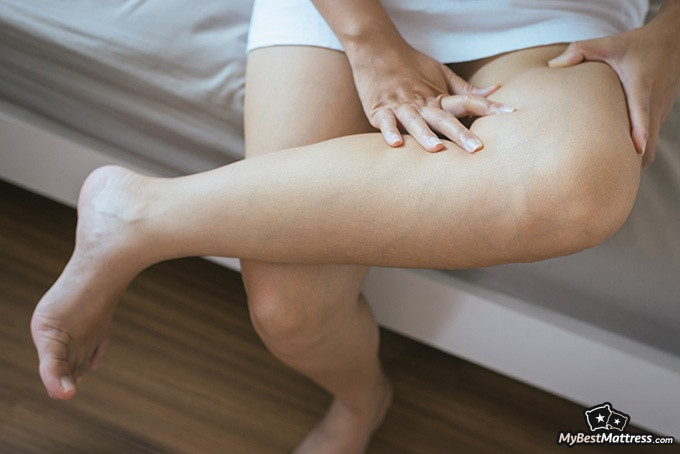
So if you only seldom sleep sitting upright when you decide to switch things up you definitely don’t have to worry about blood clots forming.
Back, Neck, And Knee Issues
Now, I know what you’re probably thinking. Yes, sleeping sitting up can both help with and cause neck and back pain.
It all comes down to how you sleep sitting up. If you just plop into the first chair you come across and decide that this is where you shall rest your head that night, chances are you aren’t going to have the most comfortable or restful sleep. Not to mention if you do it often.
In addition, our knee joints relax a lot more while sleeping sitting up compared to sleeping in a bed. Even though this might seem like a good thing, it can lead to a need to use more strength to get yourself back on your feet after a nap, which, in turn, can result in sore knees.
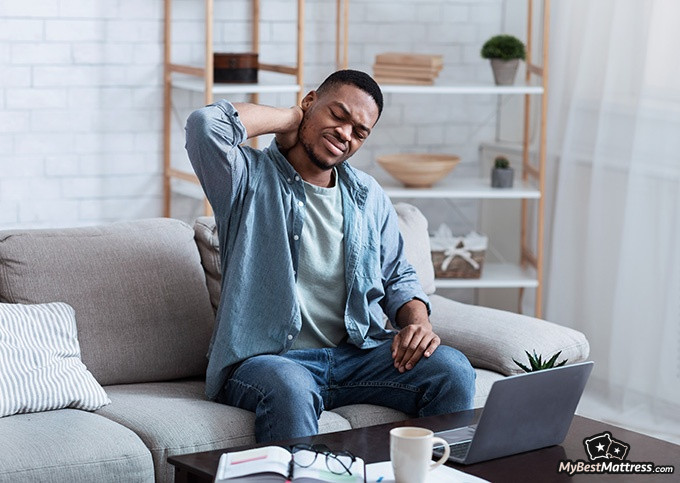
This, of course, happens after some time of uncomfortably sleeping sitting up, but it’s best to beware of these possible problems and avoid them in time, rather than end up looking for a way to reverse them.
Circulatory Problems
We’ve already covered that sleeping upright can help move lymph better through your body, aiding in reducing swelling and avoiding excess fluids building up around your organs.
However, there are two sides to every coin.
While sleeping upright can help nicely move fluids along in the upper body, the exact opposite is true for the lower body. That is because the lymph moves upwards through the legs, and downwards through the torso and arms. In other words, fluids always move towards the center of your body, no matter from where.
For that reason gravity works with and against you at the same time, draining the fluids in the upper half of your body, yet retaining them in the lower half.
If you would like to avoid clogging up your body it’s best to dedicate at least some time during the day to elevating your legs and allowing everything to start moving along nicely.
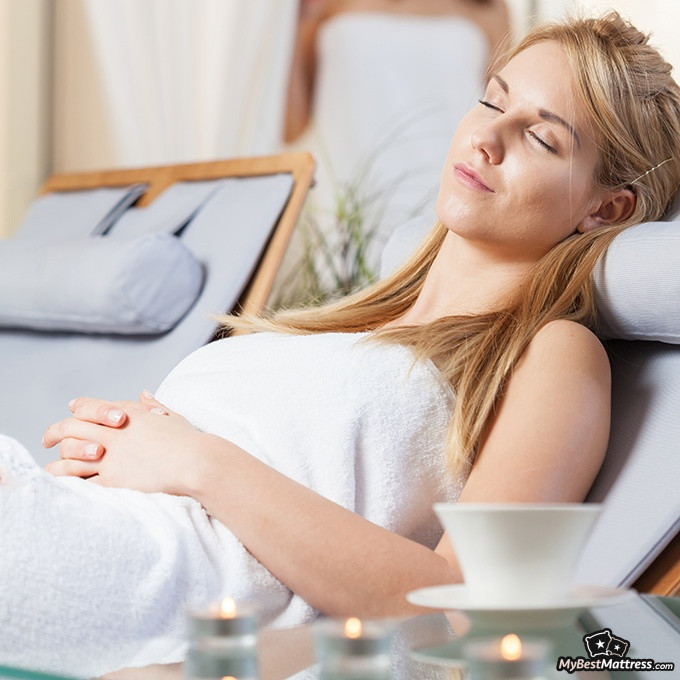
Even though these side effects of sleeping sitting up seems quite serious, you should note that they take some time to set in. So that one time crashing in the recliner while watching your favorite show is definitely not going to immediately make you ill.
How To Sleep Sitting Up And Actually Feel Rested
Oftentimes falling asleep sitting up happens by accident - that is, if it’s not specifically required to aid in your healing process. One moment you’re in a chair doing something no doubt very important, and the next you wake up in the same chair with a sore neck and drool on your shoulder.
Naturally, if you ever decide to try trading your bed for a chair, you will need to prepare in advance, as falling asleep sitting up is not as easy when done intentionally.
So, what do you need to know on how to sleep sitting up?
Transition slowly
Chances are you are part of the 99% of people that have only ever slept in a bed. So suddenly deciding to switch to an upright sleeping position can be quite a shock to the system.
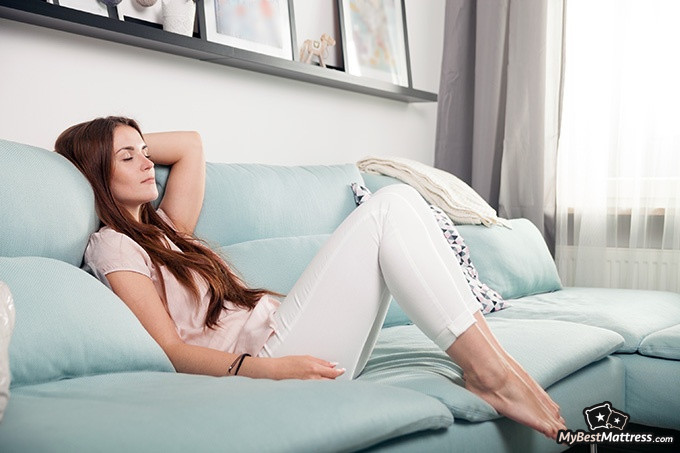
Whether you want to simply try it out of curiosity or are determined to make the switch permanently, you will need to ease into it bit by bit.
The ideal angle for sleeping sitting up depends on your source, some mentioning a 40-degree elevation at least, others - around 60-70 degrees from the ground. If you decide to really sit while sleeping and go for the second option, because this is almost a right angle, the first attempt at falling asleep sitting up like that will most definitely not be successful.
A good approach is slowly increasing the elevation of your upper body every couple of nights, allowing yourself to get used to the new angles. You can use pillows or a stiff board to prop yourself up, making sure you’re comfortable and safe throughout.
Proper support
The key element of getting enough high-quality sleep sitting up is making sure you are properly supported from all sides. That being said, this does not mean that you should lean against several surfaces or into a corner, even though you might gravitate towards it instinctively.
You might not expect this, but you only need to worry about properly supporting your neck and lower back. Because these parts of our bodies bear the most pressure and weight while we are upright, they need to be propped up with pillows to let the back relax without accidentally getting into an unhealthy position.

Depending on how soft of a surface you prefer to sleep on, you can either use regular sleeping pillows to support your back or switch one for a rolled-up towel for your lower back. Or, you could always experiment and find the best pillow for your specific needs.
Create the perfect environment
A lot of the time falling asleep can be difficult even in the most comfortable bed ever. It’s too hot, too bright, too noisy - sometimes all three at the same time! Though in that case, it sounds a lot like daytime and you might just be a vampire…
Supernatural aside, there is a very important aspect many of us tend to overlook while going to bed - our bodies need a specific environment to be able to properly rest.
Perhaps the factor mentioned the least is the specific temperature we can sleep best in. Even though our bodies’ temperature lowers naturally when we fall asleep, the environment should mimic it and be comfortably cool as well.
The golden number is anywhere between 60 and 67 degrees Fahrenheit. If you can, turn on air conditioning to lull you to sleep, or, if you can’t control the room's temperature, consider investing in a cooling pillow to support your neck, with GhostBed offering some of the best options on the market.
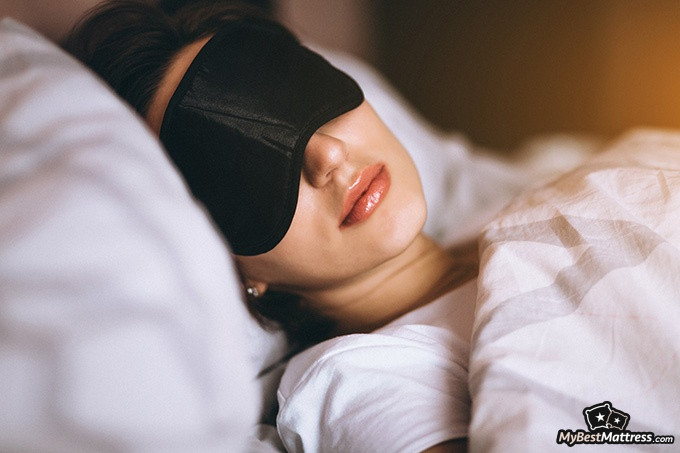
We are wired to start feeling sleepy as nighttime sets in. And we are especially affected by lighting, as the production of the hormone melatonin is triggered by darkness. Commonly known as the “sleep hormone”, melatonin is our bodies’ main signal to start settling down for the night.
It’s best to sleep in as dark of a room as possible, however, sleep masks can be a helpful alternative.
And of course, not many of us can peacefully sleep surrounded by loud noise. The continuous stimulation prevents our brains from properly “powering off”, making falling asleep sitting up or in any other position much harder than it should be.
While some people prefer the tried and true earplug route, others tend to gravitate towards a more technological approach. Whether you go with calming nature sounds or acoustic covers of your favorite songs, noise-canceling headphones can truly be lifesavers. Or, in this case, sleepsavers!
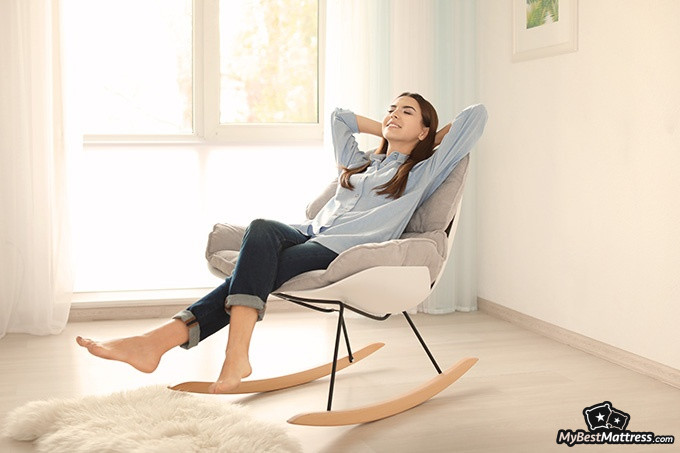
Truth be told, it can take some time to figure out exactly how to sleep sitting up. But it’s not impossible! The key is making sure you have everything you might need and not being afraid to try again.
The Best Sleeping Positions
Of course, chances are that sleeping sitting up is not your ideal sleeping position. Various aches, pains, or perhaps just a chronically slumping head jolting you from your sleep is not something that many people can tolerate.
Depending on your health and a whole plethora of other factors it might take some time and creativity to find your ideal sleeping position. But what is the universally best position to sleep in? Let’s find out.
On Your Back
I’m certain no one is surprised to see that sleeping on your back is at the top of the podium.
Sleeping on your back is often considered to be the healthiest sleeping position, even if it’s nowhere near being the most popular one. It can help keep your spine in correct alignment, avoiding unnecessary pressure in more sensitive areas.
Additionally, sleeping on your back keeps your internal organs in the correct position, which can help fight off nighttime acid reflux, as well as prevent sagging or wrinkling of the skin.
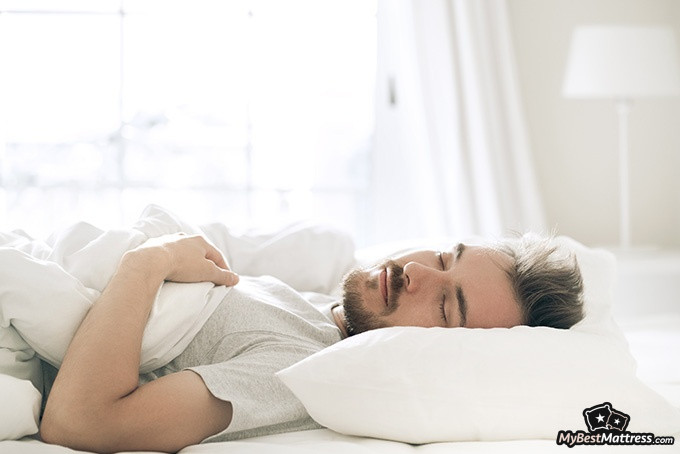
That being said, back sleepers are often affected by sleep apnea and snoring, which can lower the quality of sleep. In such cases slightly propping up the head tends to solve the problem and avoid complications.
Full circle, right?
On Your Side
Including all of its variations, this is by far the most popular sleeping position, with over 60% of people curling up on their sides every night. Even though it’s the coziest way to sleep in my opinion, it does come with its pros and cons.
First of all, because of the way your internal organs are arranged, sleeping on your side - particularly the left one - can help significantly reduce acid reflux, improve digestion, and even blood flow!
Sleeping on your left side is also ideal for pregnant women, as it stops the uterus from pressing against the liver and eases the blood circulation to the fetus.
With all that said, it is important to mention the drawbacks of sleeping on your side. First and foremost, it’s not easy to keep your spine properly aligned and supported while sleeping on your side. This, however, can be fixed with a memory foam mattress, such as those offered by Puffy, or extra strategically placed pillows to provide proper back support while sleeping on your side. Additionally, gravity and pressing your face against the pillow can cause breast sagging and wrinkles.
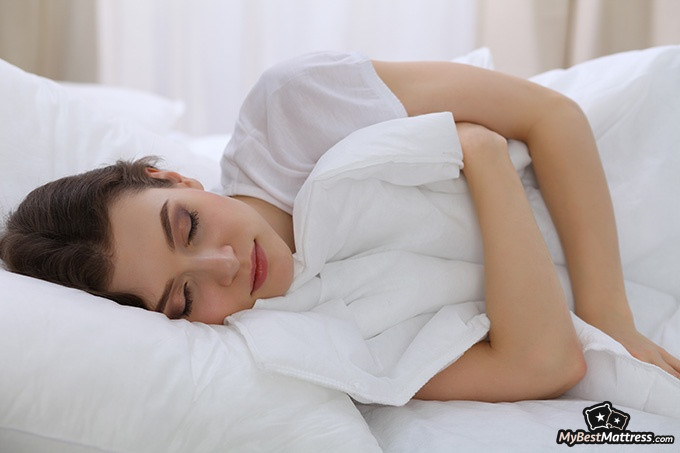
With all that being said, side sleeping still remains on top as the most popular position. It’s safe to say that feeling cozy and comfortable is quite important to people!
On Your Stomach
As a proud stomach sleeper, it pains me to say that sleeping face-down is one of the worst positions you could sleep in. Starting with the unnaturally twisted neck and ending with extra pressure falling on your internal organs, on your stomach, though tempting, is far from an ideal sleeping position.
In general, it mostly boils down to unnatural pressure placed on the body that in worst-case scenarios can lead to a pinched nerve and a very painful morning.
Believe me, I know this is one tough habit to break. However, if you simply cannot bring yourself to sleep in any other position than your stomach, consider purchasing a mattress designed specifically for stomach sleepers, helping alleviate the unpleasant consequences of the pose.
Conclusions
There are many trends emerging every day regarding bettering our sleep and improving our health, though few seem as unusual and stand out from the rest as much as sleeping sitting up.
After sleeping sitting up was first adopted hundreds of years ago, some people are currently trading their beds for chairs for the same reason as before - health benefits. Sleeping upright can be notably beneficial to those suffering from sleep apnea and snoring or acid reflux, as well as alleviating back and neck pain.
Of course, knowing how to sleep sitting up doesn’t come naturally, as most of us have been sleeping in beds our entire lives. That being said, good lower back and head support, a sleep-friendly environment, and slowly working your way up (pun intended) can make sleeping upright your new favorite sleep position.
In general, the bottom line remains the same - health and quality sleep should be the top priorities. So if you think that you would feel better rested after sleeping in a chair or perhaps hanging upside down, there’s no harm in trying something new!
I hope you’ve found this article informative and perhaps it has sparked some curiosity in you to try sleeping sitting up yourself!
Scientific References
1. Franklin KA, Lindberg E. Obstructive sleep apnea is a common disorder in the population-a review on the epidemiology of sleep apnea. J Thorac Dis. 2015
2. Kesieme E, Kesieme C, Jebbin N, Irekpita E, Dongo A. Deep vein thrombosis: a clinical review. J Blood Med. 2011
Leave your honest feedback
Leave your genuine opinion & help thousands of people to choose the best mattress. All feedback, either positive or negative, are accepted as long as they’re honest. We do not publish biased feedback or spam. So if you want to share your experience, opinion or give advice - the scene is yours!



